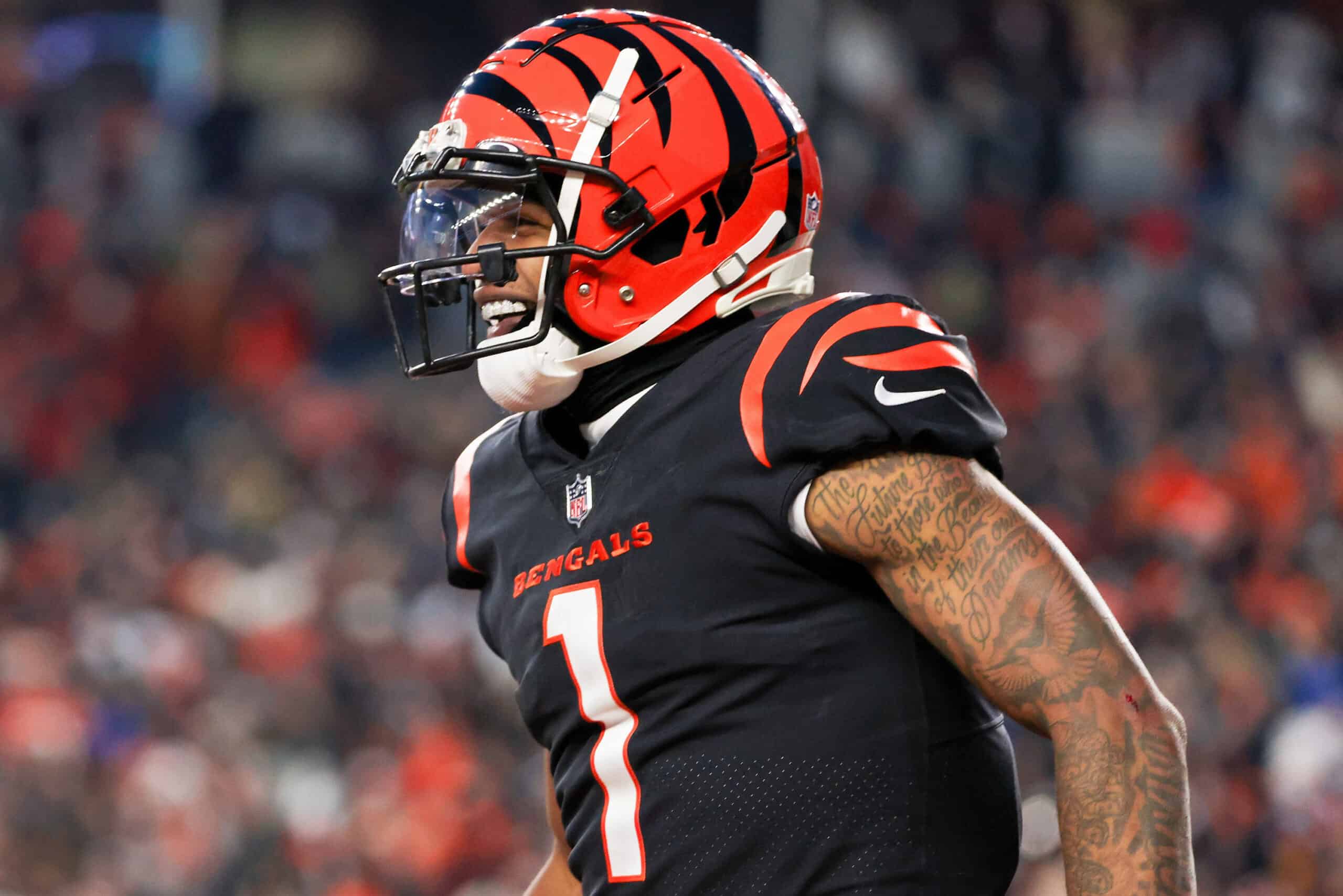A four-win 2020 season immediately followed by an AFC North crown and the franchise’s first playoff win in 31 years. How did we get here? Who really are Dey?
In April, the football world was completely split on whether the Cincinnati Bengals should use their number five selection to draft LSU wide receiver Ja’Marr Chase or Oregon offensive tackle Penei Sewell. When the Bengals drafted Chase, it felt like a surplus pick. The offense already had two young and talented receivers in Tee Higgins and Tyler Boyd, and it had a void in the offensive line. But the Bengals not only changed their WR personnel with the pick, they changed the way they used them.
Chase’s Direct Impact
(All data used in this study only considers plays in which Joe Burrow was the QB. That roughly means the 2020 season stops at Week 11 and 2021 doesn’t include Week 18, but does include their playoff game against the Raiders.)
Chase himself has generated a ton of offense for the Bengals. He pulled in 1,522 yards on 86 receptions, scoring 13 times. He’s done the most damage on go routes, compiling 273 yards and four touchdowns on only six catches. With 14 targets (and three drops), he’s catching these routes an average of 31 yards downfield. When opposing corners have to respect this deep ball, it opens up routes with similar releases that break earlier.
Ja’Marr Chase’s Most-Run Routes in 2021
| Route | Receptions | Yards | Route Run % |
|---|---|---|---|
| Go | 6 | 273 | 18% |
| Curl | 13 | 173 | 15% |
| Dig | 8 | 117 | 10% |
| Slant | 15 | 247 | 10% |
| Out | 9 | 167 | 8% |
With most of his releases beginning with him launching upfield (and generating a ton of yards), the slant has been another avenue where Chase has been able to dominate. Defenders need to play with Chase in front of them in order to not get beat deep, which sacrifices their ability to defend the slant. Chase has turned 15 slant receptions into 247 yards, 143 of these coming after the catch.
Chase is great. But it isn’t just his own receiving stats that have made the Bengals AFC contenders—it’s the threat of Chase that has allowed Boyd and Higgins to excel.
Chase’s Impact on Higgins and Boyd
Higgins ran 38 fades in the weeks that Burrow played in 2020, which made up 12% of his routes, and produced a mere 67 yards. In 2021, that rate dropped to 4%, and redistributing those former fade routes to slants, outs, and gos, he generated 11 more yards per game from those three than he did in 2020.
Tee Higgins Most-Run Routes in 2021
| Route | Receptions | Yards | Route Run % |
|---|---|---|---|
| Dig | 14 | 215 | 13% |
| Go | 3 | 123 | 13% |
| Slant | 11 | 119 | 12% |
| Curl | 12 | 107 | 12% |
| Out | 12 | 140 | 10% |
While he may be running every number in the route tree, Burrow is targeting Higgins on 42% of his out routes (only 18% in 2020), resulting in 12 catches for 140 yards. With Chase now commanding the deep ball, Higgins has been able to run in parallel with the line of scrimmage much more, with 43% of his yards coming on crossing routes or outs, a number that jumped from 23% in 2020. This is where Chase helps the offense, even without the ball in his hands.
Shifting our view to the primary slot WR in Tyler Boyd, his route tree stayed similar (no routes moving by more than 4% in either direction), but where his targets came from shifted dramatically. In 2020, when he ran a slant, he was targeted on 46% of these routes. This number fell to just 19% in 2021 (Chase is also dominating in slants for the offense). Boyd’s deep cross target rate was sliced from 35% to 13%. Just like Higgins, other short crossing routes have seen their target rates go up. In 2020, Boyd was targeted on 18% of digs and drags, a number that went up to 21% in 2021.
Last Word
When we look beyond Boyd and Higgins, Cincinnati has not changed their offensive mentality much under Zac Taylor. One significant change we see is a de-emphasis on attacking the deep middle of the field, but that change comes through targets and not routes run. However, there is a new emphasis on the deep boundaries. The 2020 Burrow-led Bengals only ran 89 go routes, accounting for just 5% of the total routes run. That number jumped up to 9% in 2021, with Chase accounting for 43% of them.
It wasn’t just an elite player selected in the draft, it was a pick that changed the effectiveness of the entire wide receiver room. The fear that a deep Chase route brings is allowing Boyd and Higgins to dominate underneath. The Bayou Bengal is a key reason why the Cincinnati Bengals flipped from the four-win team to the Super Bowl hopeful that we’ll see in a tough matchup in Nashville on Saturday, against the 6th-ranked Titans defense in SIS’ Pass Coverage Points Earned per play metric.
















